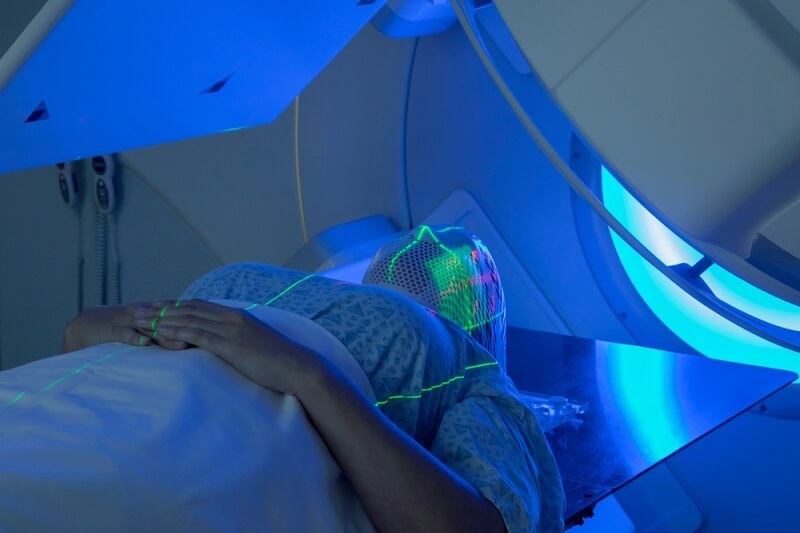Explore The Different Types of Cancer Treatment Options

Cancer, a relentless adversary, takes many forms and affects millions of lives worldwide. Fortunately, oncology has made tremendous strides in developing various cancer treatment options. These treatments aim to target and eliminate cancer cells, alleviate symptoms, and improve the quality of life for patients. Here are the top 10 types of cancer treatment options, detailing their processes, medications, and relevant information to help you better understand these crucial therapies.
Surgery
Surgery is often the initial cancer treatment, especially when the tumor is localized. The goal is to remove the cancerous tissue altogether. Depending on the tumor's size and location, procedures can range from minimally invasive surgery, such as laparoscopy or robotic surgery, to primary operations. Common medications involved include anesthesia for the surgery itself and post-operative pain management drugs. Surgery is most effective for solid tumors that are confined to one area. However, it might not be suitable if the cancer has spread to multiple parts of the body. Surgery also plays a role in cancer staging, which helps determine the extent of the disease and the best treatment approach. Sometimes, a biopsy is performed during surgery to obtain a tissue sample for diagnosis.
Radiation Therapy

Radiation therapy uses high-energy rays to target and destroy cancer cells. This non-invasive treatment is often combined with other medicines, such as surgery or chemotherapy. It can be delivered externally using machines (external beam radiation) or internally via implants (brachytherapy). The process involves precise planning to minimize damage to healthy tissues surrounding the tumor. Radiation therapy may require multiple sessions over several weeks. Medications might include drugs for managing side effects like skin irritation, which can occur when treating skin cancers. Radiation therapy planning involves precise imaging and mapping to ensure the radiation beams are accurately directed at the tumor while minimizing exposure to healthy tissues. Patients may receive radiation treatments daily over several weeks.
Immunotherapy
Immunotherapy is a groundbreaking approach that harnesses the power of the immune system to identify and attack cancer cells. It has revolutionized cancer treatment and offers new hope for many patients. Medications like checkpoint inhibitors, CAR-T cell therapy, and monoclonal antibodies are used in this process. These drugs help immune cells recognize and fight cancer, potentially with fewer side effects than traditional therapies. Immunotherapy is proving effective in treating various types of cancer, including melanoma, lung cancer, and some types of leukemia. Immunotherapy works by blocking or activating specific immune checkpoints, enhancing the immune response against cancer. This approach has shown remarkable success in treating various types of cancer, particularly melanoma, lung cancer, and some forms of leukemia.
Chemotherapy

Chemotherapy involves the use of drugs to kill or slow the growth of cancer cells. These drugs circulate throughout the body and target rapidly dividing cells, including cancer cells. Medications vary depending on the type of cancer but can lead to side effects like nausea, hair loss, and fatigue. Chemotherapy can be administered orally or through intravenous infusion. It's typically used when cancer has spread to various parts of the body and is difficult to remove with surgery alone. Chemotherapy regimens vary based on the type of cancer and the individual patient. It can be administered orally or through intravenous infusion.
Targeted Therapy
Targeted therapy involves drugs focusing on specific molecules or pathways in cancer growth. Medications are tailored to the cancer's unique genetic and molecular characteristics, minimizing harm to healthy cells. For example, tyrosine kinase inhibitors treat some types of leukemia and diagnose lung cancer. Targeted therapy is especially effective when specific genetic mutations are present in the cancer cells. It offers a more personalized approach to cancer treatment. These drugs often have fewer side effects compared to chemotherapy. They are selected based on the specific genetic mutations or biomarkers in the patient's cancer cells. Targeted therapy is particularly effective in cases where these mutations are identified.
Hormone Therapy
Hormone therapy is primarily used for hormone-sensitive cancers like breast and prostate cancer. These cancers rely on hormones to grow. Hormone therapy works by blocking or lowering hormone levels, thus inhibiting cancer growth. For instance, tamoxifen is commonly used for breast cancer patients, and androgen deprivation therapy is used for prostate cancer. Hormone therapy can be a long-term treatment to manage cancer effectively. Hormone therapy can be a long-term treatment, especially for breast cancer patients. In some cases, it may involve taking medication daily, while others may receive hormone-blocking injections.
Stem Cell Transplantation

Stem cell transplantation, or bone marrow transplant, is often used for hematologic cancers like leukemia and lymphoma. It involves replacing damaged or cancerous bone marrow with healthy stem cells. This procedure can be life-saving but also has significant risks and side effects. There are two main types of stem cell transplantation: autologous (using the patient's cells) and allogeneic (using cells from a donor). Medications condition the patient's immune system and prevent complications, including graft-versus-host disease (GVHD) in allogeneic transplants. Stem cell transplantation is a complex and high-risk procedure, often requiring patients to be hospitalized for an extended period.
Precision Medicine
Precision medicine is a revolutionary approach to cancer treatment that tailors therapy based on an individual's genetic makeup. Genomic testing helps identify specific mutations in cancer cells, allowing oncologists to select targeted therapies for maximum effectiveness. Medications are chosen based on the patient's unique genetic profile. This approach offers a more precise and personalized way to treat cancer, increasing the chances of a positive outcome. It is precious for cancers with known genetic mutations, such as EGFR mutations in non-small cell lung cancer.
Photodynamic Therapy
Photodynamic therapy utilizes a light-sensitive drug and laser light to destroy cancer cells. The drug is administered, and when activated by light, it produces oxygen molecules that kill the cancer cells. This treatment is mainly used for skin, esophageal, and lung cancers. The process involves the administration of the photosensitizing drug, followed by exposure to specific wavelengths of light. The light activates the drug, producing oxygen radicals that damage and destroy the cancer cells. The photosensitizer is usually given through an intravenous injection, followed by applying light to the affected area.
Complementary and Alternative Therapies
Complementary and alternative therapies are not direct cancer treatments, but they can help manage cancer symptoms and side effects. These therapies include acupuncture, massage, meditation, and dietary changes. While they don't directly treat cancer, they can improve a patient's overall well-being and quality of life. Acupuncture is where thin needles are inserted into specific points on the body to alleviate pain and other symptoms. Massage therapy can help reduce stress and improve relaxation; meditation can assist with mental well-being and emotional balance. Dietary changes involve adjusting one's diet to support overall health and the body's ability to cope with cancer treatment. Nutrition plays a vital role in cancer care, and consulting with a registered dietitian can be beneficial.
Also Read: Spotting the Early Signs of Cancer in Women: Things To Know
Conclusion
Cancer treatment has come a long way, and the options available today reflect significant progress in the fight against this disease. The choice of treatment depends on the type and stage of cancer, as well as the patient's overall health. By understanding these top 10 cancer treatment options, patients and their loved ones can make more informed decisions and, in conjunction with their healthcare team, develop a personalized plan for their journey toward recovery.
This content was created by AI
-1717753922-r.jpg)